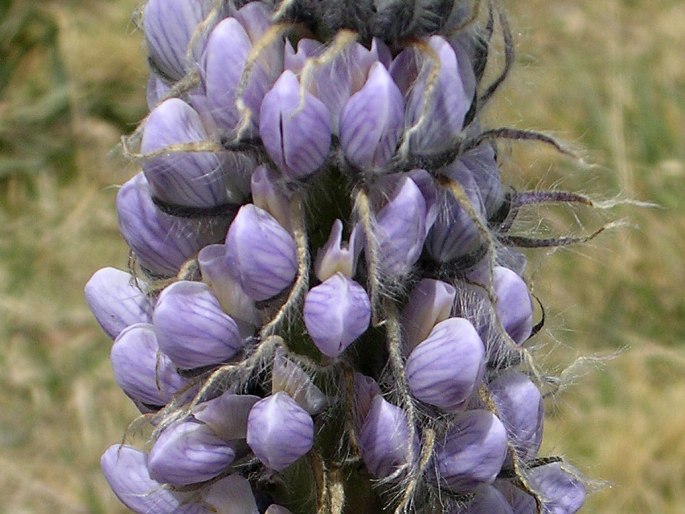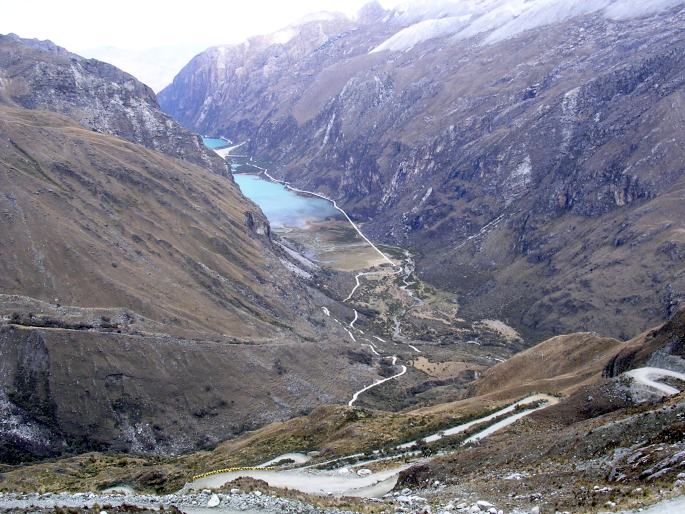Family: Fabaceae Lindl.

Distribution: Peruvian regions of Ancash, Junín and Lima, Cordillera Blanca.
Ecology: Alpine species, grows on wet meadows and pastures, on river banks, on sandy slopes, at altitudes from 3400 to 4900 m.

Description: Perennial herb, 120–140 cm tall. Stem is a short, erect, unbranched, up to 3.5 cm in diameter. Leaves are crowded at the base, long petiolate, palmately compound with 8–15 lanceolate leaflets, 4–6.3(–10) cm long and 0.7–1.5 cm wide, densely silky-pubescent. The inflorescence is dense, racemose, 25–40(–65) cm long, 300–350-flowered, flowers 16–18 mm long, shortly pedicellate, calyx 2-lipped, hairy, corolla light purple with pale yellow spots, bracts 1.5–2 cm long, hairy. The fruit is a legume, 2–3 cm long.
Note: The genus Lupinus comprises about 200 species distributed in America, the Mediterranean region and the mountains of tropical Africa. In the South American Andes occurs over 80 species, their taxonomy is still not completely resolved.



These images were taken in Peru, Huascarán NP, Quebrada de Llanganuco (by Jindřiška Vančurová, August 17, 2006).


